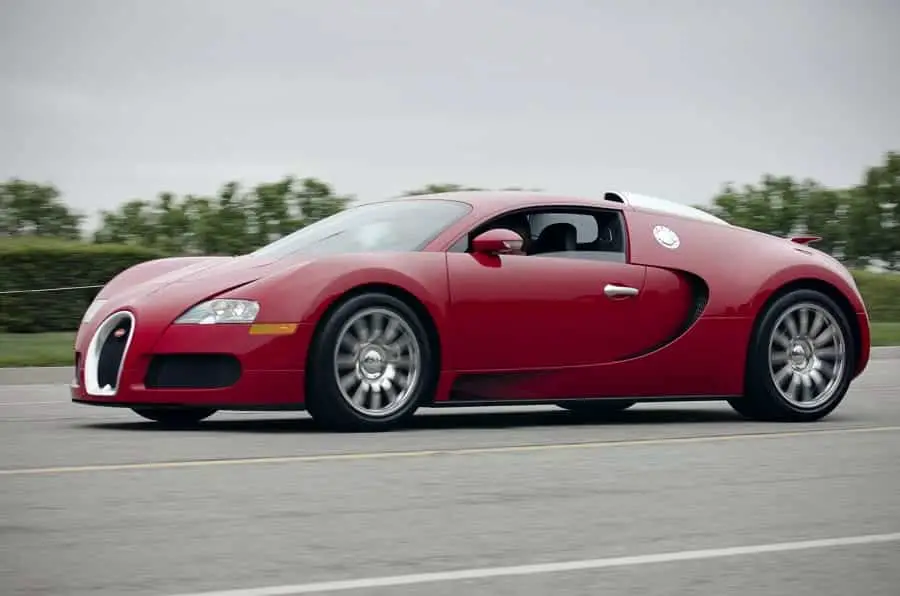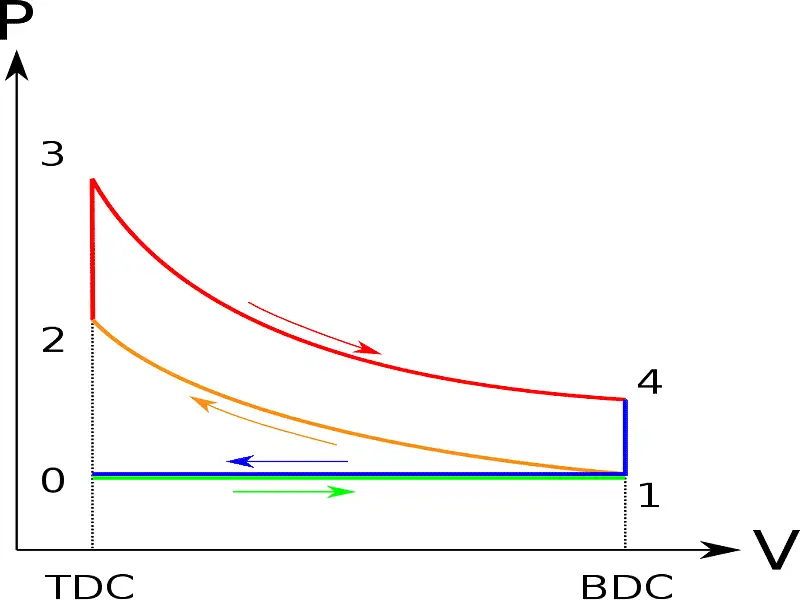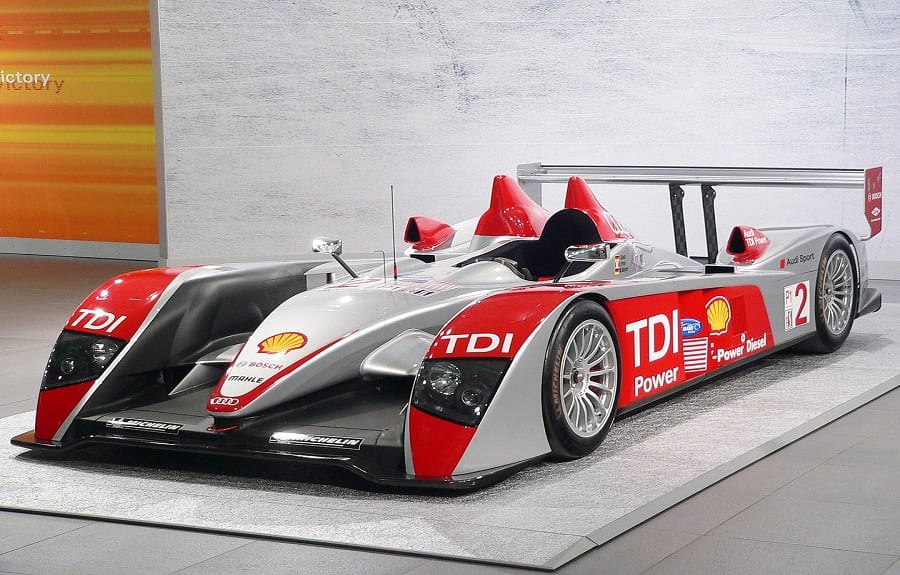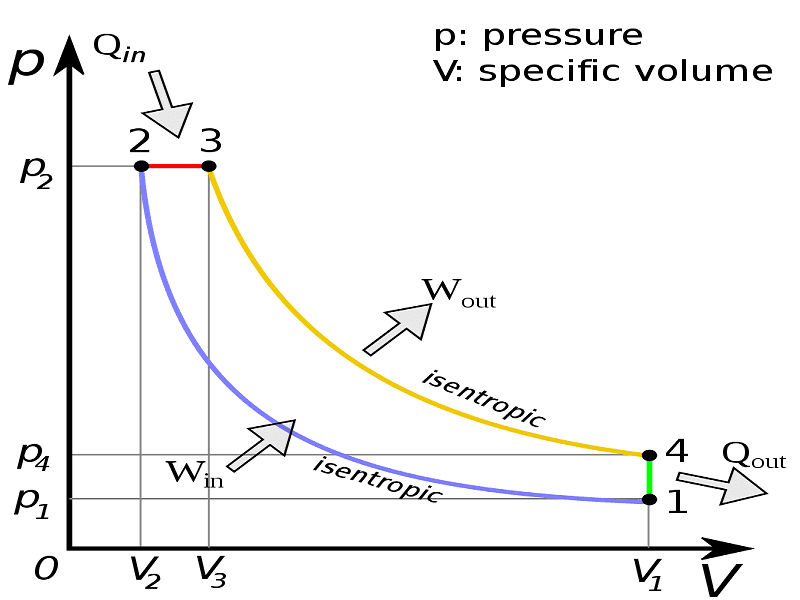Without the theoretical invention of the Carnot engine, none of the internal combustion engines could have become reality. Such is the case with petrol and diesel engine.
In other words, the Carnot theorem revolutionized the concept of thermodynamics. In fact, based on the framework laid by Sadi Carnot, Rudolf Clausius and Lord Kelvin derived the concept of entropy and the second law of thermodynamics.
Just because of the need for the topic, right now, we are only interested in petrol and diesel engine. Therefore, without wasting any time, let’s shoot.
Apart from both being the manifestation of the Carnot cycle, the fundamental difference between petrol and diesel engine is that the petrol engine works on the otto cycle. While, on the other hand, the diesel engine works on the diesel cycle.
Not to mention, there are some more differences too based on the efficiency and their working style. But, before going into a broad discussion, let me give you a quick review of the two. Let’s dive right in!
Petrol Engine vs Diesel Engine
| Petrol Engine | Diesel Engine | |
| 1. | The petrol engine works on Otto Cycle. | Diesel engines work on Diesel Cycle. |
| 2. | In petrol engines, both air and fuel are compressed together. | In diesel engines, only air is compressed, not the fuel. |
| 3. | In petrol engines, both air and fuel are mixed together inside the carburetor | In diesel engines, both air and fuel are mixed together inside the cylinder. |
| 4. | Petrol engines come in the category of internal combustion engines. | Both petrol and diesel engine comes in the category of internal combustion engines. |
| 5. | In petrol engines, fuel ignition is achieved with the help of an electric spark. That’s why they are also known as spark-ignition engines. | In diesel engines, fuel ignition is achieved with the help of hot compressed air. That’s why they are also known as compression-ignition engines. |
| 6. | The working fuel for the petrol engine is highly volatile in nature i.e petrol or gasoline. | The working fuel for the diesel engine is relatively less volatile in nature i.e diesel. |
| 7. | These types of engines generally have a low compression ratio. That’s why shows low efficiency. | These types of engines generally have a high compression ratio. That’s why shows high efficiency. |
| 8. | In petrol engines, power generation is low. Therefore, relatively high fuel consumption. | In diesel engines, power generation is high. Therefore, relatively less fuel consumption. |
| 9. | Petrol engines have a high running cost, but low maintenance cost. | Diesel engines have a low running cost, but high maintenance cost. |
| 10. | They are used for light-duty vehicles. | They are used for heavy-duty vehicles. |
From the above petrol and diesel engine differences, you got the exact overview of these two. However, let us try to understand both of them in a detailed format. Keep reading
Definition of Petrol Engine

Petrol engines are nothing but reciprocating internal combustion engine that works due to spark ignition. Not to mention, these engines work on the Otto cycle. An otto cycle consists of two isochoric processes and two isentropic processes, about which we will talk in the later section.
In addition, in the year 1876, the first-ever practical petrol engine was developed by German engineer Nicolaus Otto. I mean, that’s why, sometimes, these spark-ignition engines also go by the name of Otto engines.
Moreover, as the name suggests, these types of engines work on petrol as fuel. The boiling point of petrol is between 25 and 210°C. Typically, in petrol engines, the air and fuel are commonly mixed inside the carburetor before compression.
And then an electric spark is used to ignite the fuel. However, the modern form of petrol engines uses a cylinder-direct petrol injection method, bypassing carburetor. But, due to its high cost, its use is limited to expensive vehicles only.
Must read, What is Mechanical Energy? – Definition, Facts, Types & Examples
PV Diagram of Petrol Engine

As you know, a spark-ignition engine or petrol engine works on the Otto Cycle. Therefore, in order to understand the working of the petrol engine, at first, we need to understand the working of the otto cycle.
Technically speaking, an otto cycle consists of two isochoric processes and two isentropic processes. However, in order to make things a bit easy to understand, I shall be adding two more additional processes.
Process 0-1 (Intake Stroke)
During process 0-1, at constant pressure, the air is drawn into the cylinder through the intake valve. That’s why we say this process is the intake stroke.
Not to mention, the exhaust valve is closed during the intake stroke i.e piston moves from Top Dead Center (TDC) to Bottom Dead Center (BDC).
Process 1-2 (Isentropic Compression Stroke)
Before the isentropic compression stroke, both air and fuel (petrol) are mixed together. During process 1-2, the piston again moves from BDC to TDC.
As you can see from the above diagram when the piston moves from BDC to TDC, the working fluid’s (a mixture of air and fuel) volume is minimized. Therefore, as a result, the working fluid at initial state 1 is compressed isentropically to state point 2.
We call this process isentropic compression. WHY? Because during this process, no mechanical energy is lost due to friction, hence frictionless. On the other hand, there is no heat transferred to or from the system.
Therefore, this process is an adiabatic reversible process. Mathematically, the isentropic compression ratio is given by (V1/V2). The compression ratio for a conventional petrol engine is 7 – 10.
Must Read: Top 6 Uniform Motion Examples in SIX minutes (All NEW)
Process 2-3 (Isochoric Ignition Stroke)
As the name suggests, this is the stage where the fuel ignition is achieved with the help of an electric spark following the consequent rapid combustion of petrol (fuel).
During process 2-3, when the piston is at rest at TDC, at constant volume, heat is added to the system due to the rapid burning of the fuel. Therefore, as a result of the increase in the temperature, the pressure of the system rises exponentially.
Mathematically, a pressure ratio or explosion ratio is given by (P3/P2). In addition, just because this process takes place at constant volume, we also call process 2-3 a constant volume process.
Process 3-4 (Isentropic Expansion Stroke)
Now is the time for the piston to move from TDC to BDC. As you know, till now, we have seen how fuel is compressed and ignited with the help of an electric spark. Therefore, as a result of the rapid burning of the fuel, the system is highly pressurized.
During process 3-4, due to isentropic expansion, the piston moves from the TDC to BDC. In other words, the working fluid expands isentropically. Hence, work is done by the system to move the piston from TDC to BDC.
As you can see from the above diagram when the piston moves from TDC to BDC, the working fluid’s (a mixture of air and fuel) volume is maximized. Not to mention, we call this process an isentropic expansion. WHY?
Because during process 3-4, no mechanical energy is lost due to friction, hence frictionless. On the other hand, there is no heat transferred to or from the system. Mathematically, the isentropic expansion ratio or power stroke ratio is given by (V4/V3).
Process 4-1 (Isochoric Heat rejection stroke)
As you can see work is done by the system to move the piston from TDC to BDC. Therefore, during process 4-1, at constant volume, heat is removed from the system with the simultaneous drop in the pressure of the working gas.
The rejected heat is removed to an idealized external sink. And at this stage, the system has returned back to the initial state 1.
Process 1-0 (Exhaust Stroke)
During process 1-0, at constant pressure, the air is released to the atmosphere from the exhaust valve. That’s why we say this process is the Exhaust stroke.
Not to mention, the intake valve is closed during the exhaust stroke i.e piston moves from BDC to TDC. Therefore, as a result, the process starts anew.
Conclusion
Just in four short steps, I would like to conclude how a petrol engine works!
- During process 1-2, due to isentropic compression, work is done by the piston to compress the working fluid (air-fuel mixture).
- Through process 2-3, at constant volume, heat is added to the system by the combustion of fuel.
- During process 3-4, due to isentropic expansion, work (useful work) is done on the piston by working fluid.
- Through process 4-1, at constant volume, heat is removed from the system.
Editor’s Choice: Difference Between Renewable and Nonrenewable Energy Resources (Tabular Form)
Applications of Petrol Engines
Petrol engines have many applications, especially in light-duty vehicles.
- Cars
- Scooters
- Motorcycles
- Aircraft
- Motorboats
- Chainsaws
- Lawnmowers, etc.
Must read, Top 6 Sources of Mechanical Energy You Should Know
Definition of Diesel Engine

Diesel engines are also reciprocating internal combustion engine that works due to compression ignition. In the first place, these engines work on the Diesel cycle. The diesel cycle consists of one constant pressure process, one constant volume process, and two isentropic processes, about which we will talk in the later section.
In addition, in the year 1893, the first-ever practical diesel engine was developed by German engineer Rudolf Diesel. That’s why these types of compression ignition engines are known as Diesel engines.
Moreover, as the name suggests, these engines work on diesel as fuel. The boiling point of diesel is between 150 and 380°C. Unlike petrol engines, in diesel engines, only the compression of air takes place.
Due to compression, the air inside the combustion chamber becomes too hot. Therefore, as a result, when the fuel (diesel) is injected inside the combustion chamber, the fuel undergoes spontaneous ignition.
Editor’s Choice: Top 6 Advantages of Biodiesel in Six Minutes
PV Diagram of Diesel Engine

As you know, a compression-ignition engine or diesel engine works on the Diesel Cycle. Therefore, in order to understand how do diesel engines work, at first, we need to understand the working of the diesel cycle.
The diesel cycle consists of one constant pressure process, one constant volume process, and two isentropic processes, plus two more additional processes.
As you can see I have already explained the two additional processes (intake and exhaust stroke) in the otto cycle analysis.
In other words, process 0-1 and 1-0 remain the same for both petrol and diesel engine. That’s why I won’t be explaining them in this section.
Process 1-2 (Isentropic Compression Stroke)
Unlike the otto cycle, in the diesel cycle, air and fuel are mixed after the compression stroke. During process 1-2, the piston moves from BDC to TDC.
As you can see from the above diagram when the piston moves from BDC to TDC, the working fluid’s (only air) volume is minimized. Therefore, as a result, the working fluid at initial state 1 is compressed isentropically to state point 2.
Mathematically, the isentropic compression ratio for the diesel cycle is given by (V1/V2). The compression ratio for a conventional diesel engine is 15 – 20. Due to the high compression ratio, the air gets really really hot.
Process 2-3 (Isobaric Fuel Injection & Combustion Stroke)
As the name suggests, this is the place where fuel injection and combustion of diesel (fuel) takes place, of course, due to highly compressed hot air.
During process 2-3, at constant pressure, heat is added to the system due to the rapid combustion of diesel. Not to mention, due to the injection of fuel during process 2-3, there is a slight increase in the volume of the system.
Physically, this increase in volume is known as the cut-off ratio. Mathematically, the cut-off ratio is given by (V3/V2).
In addition, just because this process takes place at constant pressure, we also call process 2-3 a constant pressure process.
Process 3-4 (Isentropic Expansion Stroke)
As you can see due to the process 1-2 and 2-3, the system is highly pressurized and ready to strike. Therefore, as a result, now is the time for the piston to move from TDC to BDC.
During process 3-4, due to isentropic expansion, the piston moves from the TDC to BDC. In other words, the working fluid expands isentropically.
Hence, work is done by the system to move the piston from TDC to BDC. Mathematically, the isentropic expansion ratio or power stroke ratio is given by (V1/V3).
Process 4-1 (Isochoric Heat Rejection Stroke)
As you can see work is done by the system to move the piston from TDC to BDC. Therefore, during process 4-1, at constant volume, heat is removed from the system with the simultaneous drop in the pressure of the working gas.
The rejected heat is removed to an idealized external sink. And at this stage, the system has returned back to the initial state 1.
Conclusion
Just in four short steps, I would like to conclude how a diesel engine works!
- During process 1-2, due to isentropic compression, work is done by the piston to compress working fluid (air).
- Through process 2-3, at constant pressure, heat is added to the system by the combustion of fuel.
- During process 3-4, due to isentropic expansion, work (useful work) is done on the piston by working fluid.
- Through process 4-1, at constant volume, heat is removed from the system.
Applications of Diesel Engine
Diesel engines have many applications, especially in heavy-duty vehicles.
- Buses
- Trucks
- Passenger Cars
- Aviation
- Watercraft, etc.
Editor’s Choice: Biodiesel vs Petrodiesel – Differences & Similarities in Tabular Form
FAQs Related to Petrol and Diesel Engine
1. What is the energy density of diesel fuel?
Ans. The energy density of diesel fuel is approximately 36.9 MJ/liter (megajoules per liter).
2. What is the energy density of petrol fuel?
Ans. The energy density of petrol fuel is approximately 33.7 MJ/liter (megajoules per liter).
3. What is the calorific value of diesel fuel?
Ans. The calorific value of diesel fuel is approximately 45.5 MJ/kg (megajoules per kilogram).
4. What is the calorific value of petrol fuel?
Ans. The calorific value of petrol fuel is approximately 45.8MJ/kg (megajoules per kilogram).
That’s it for this post. If you like this article, share it if you like, like it if you share it. You can also find us on Mix, Twitter, Pinterest, and Facebook.
You might also like:
- Difference Between Mass and Weight (Tabular Form)
- Difference Between Scalar and Vector (Tabular Form)
- Volt vs Ampere – Difference and Comparision
- Fission vs Fusion – Difference in Tabular Form

Kya aapka koi youtube chanel h
No, we do not. But, we are looking forward to having one…!!!